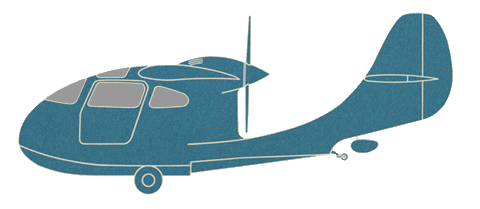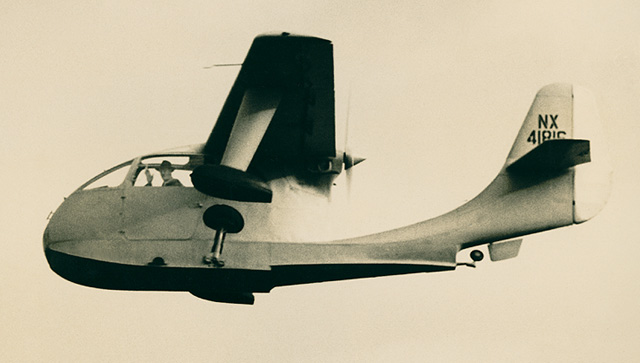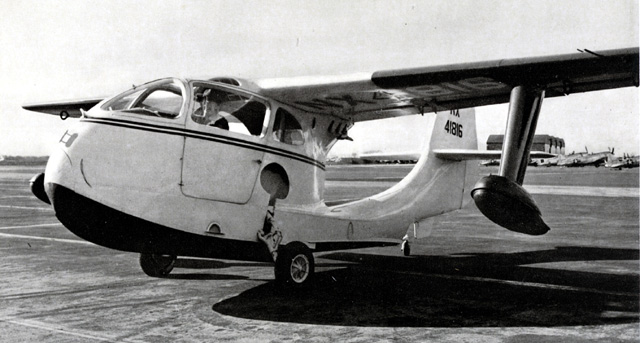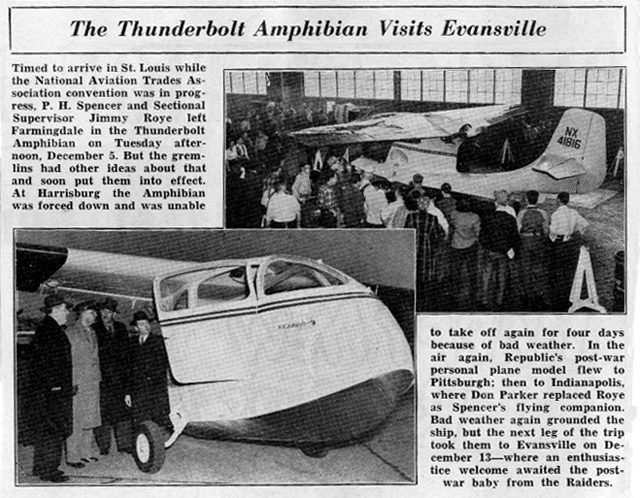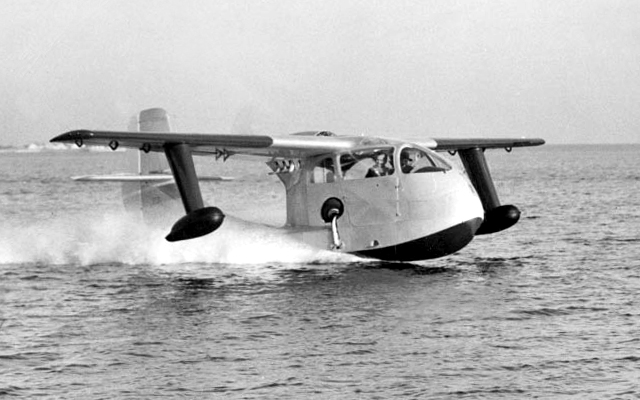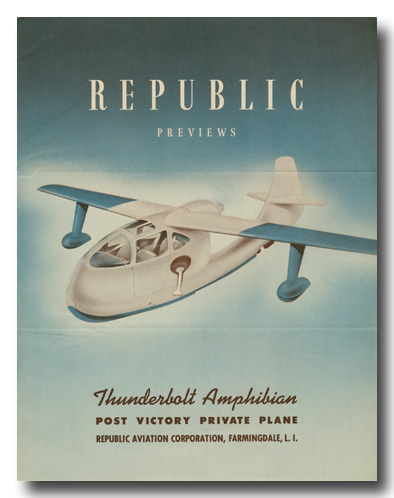 To give to postwar fliers a plane that will embody the benefit of the engineering and design experience and skill that produced the P-47 Thunderbolt, Republic Aviation Corporation, of Farmingdale,
L.I., plans production of a land and water plane for civilian use. This plane, development of which has just been revealed by Republic, gives such promise of performance that both Army and Navy are reported interested in its possibilities for sea rescue work.
To give to postwar fliers a plane that will embody the benefit of the engineering and design experience and skill that produced the P-47 Thunderbolt, Republic Aviation Corporation, of Farmingdale,
L.I., plans production of a land and water plane for civilian use. This plane, development of which has just been revealed by Republic, gives such promise of performance that both Army and Navy are reported interested in its possibilities for sea rescue work.
Still in development stage, the new plane is tentatively called the ďThunderbolt Amphibian.Ē Although plans for this postwar plane have been closely guarded, continued secrecy has become impossible because flights of the first experimental model have become a familiar sight on both land and water in and about Long Island.
In its present stage of development Republicís amphibian is a high wing monoplane of all metal construction except that movable control surfaces are fabric covered. A big comfortable cabin offers accommodations for four passengers. Interior details and fittings suggest the latest in automobile design. The upper half of the cabin is largely of plexiglass affording great visibility.
The accompanying pictures show the full cantilever wing with single strut-supported wing floats, scientifically designed hull or float that permits easy landing or take off from water requiring only 17 inches of draft fully
loaded. Wheels are retractable. Vacuum operated slotted flaps insure safe landings at approximately 50 miles per hour.
The Thunderbolt Amphibian is powered by a single, six cylinder horizontally opposed, 175 h.p. engine. The location of the engine and propeller in back of the cabin is an outstanding feature insuring greater safety in landing and docking also giving protection to the power plant from water spray, and grater passenger comfort because of reduced noise and the better forward vision permitted. The clipper type tail gives strength and fine aerodynamic design.
Republicís amphibian stems from a long line of successful land and water ships designed and built over the past twenty years by P. H. Spencer credited with having more experience with single engine amphibians than any other pilot. From Spencerís prototype, Republic engineers are evolving a plane for all-around personal, family or business use that has long been wanted by sportsmen for hunting and fishing use and by all types of private fliers who like the additional safety and flexibility of both land and water operation.
Here are preliminary specifications:
Gross weight -- 2600 pounds
Maximum speed -- 120 miles per hour
Cruising Speed -- 105 mile per hour
Wing span -- 36 feet
Length -- 26 feet, 6 inches
Height (on wheels) -- 8 feet, 7 inches
Power -- In 175 HP range
Range -- 5 hours
Price -- Not determined -- Probably under $4000
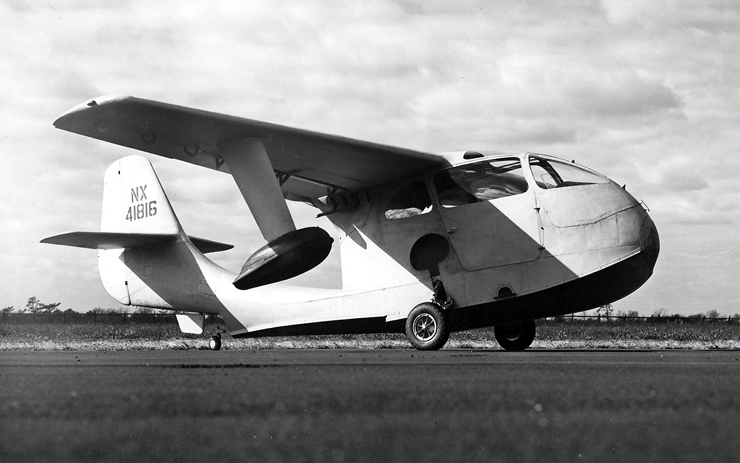
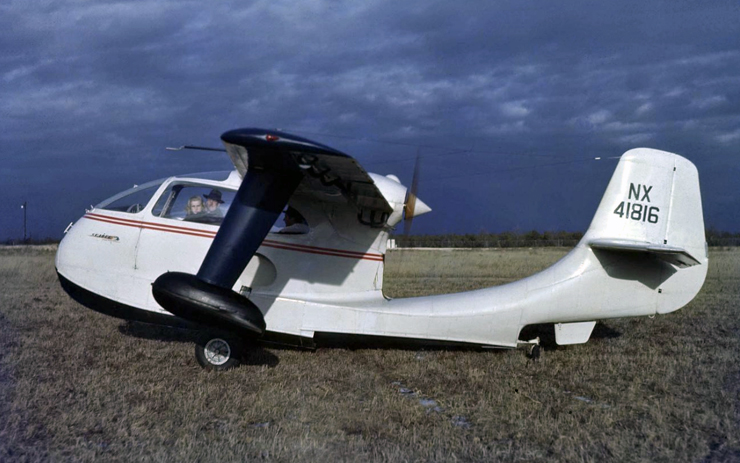
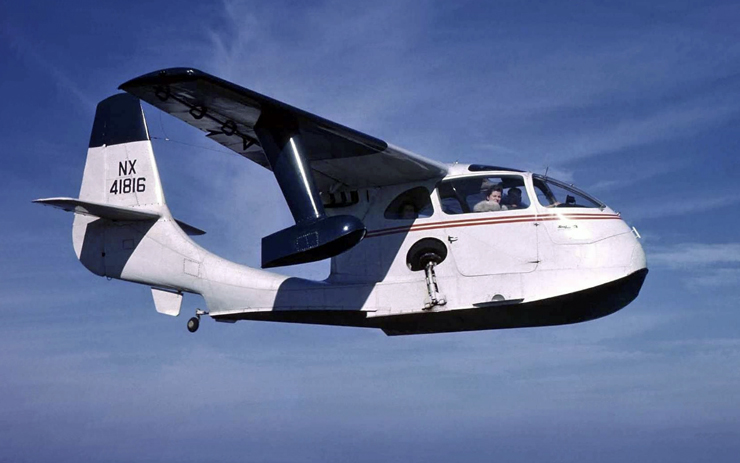
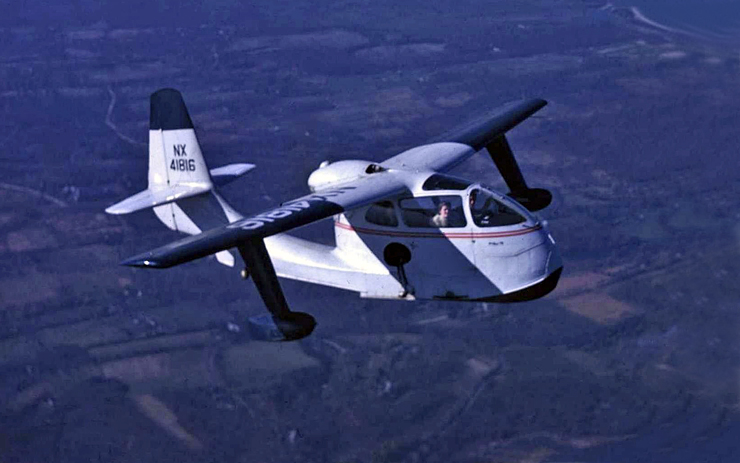

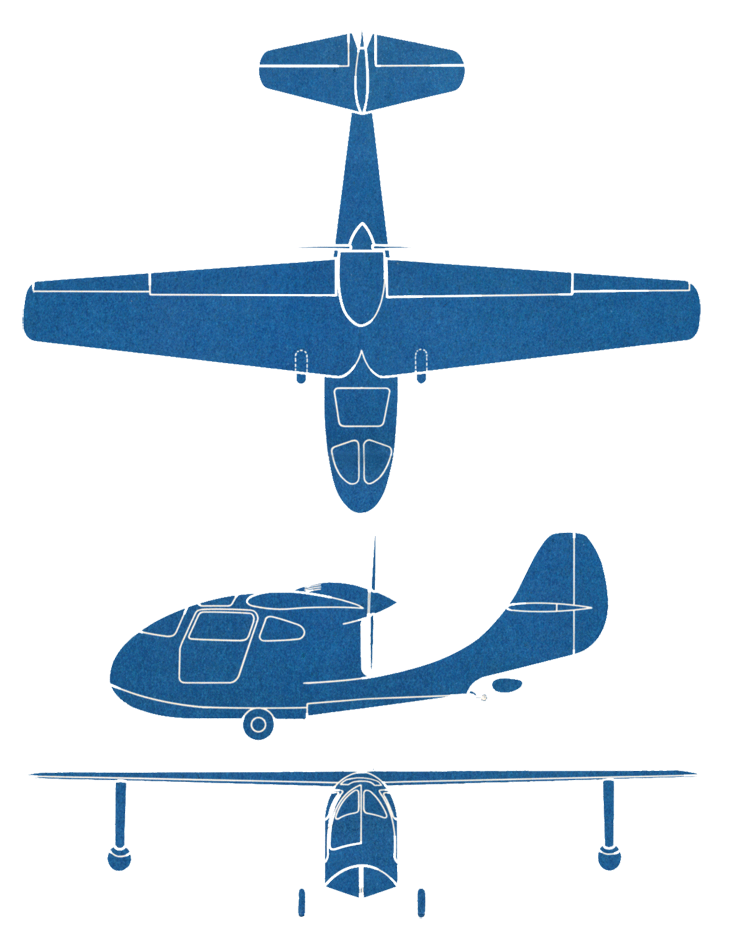
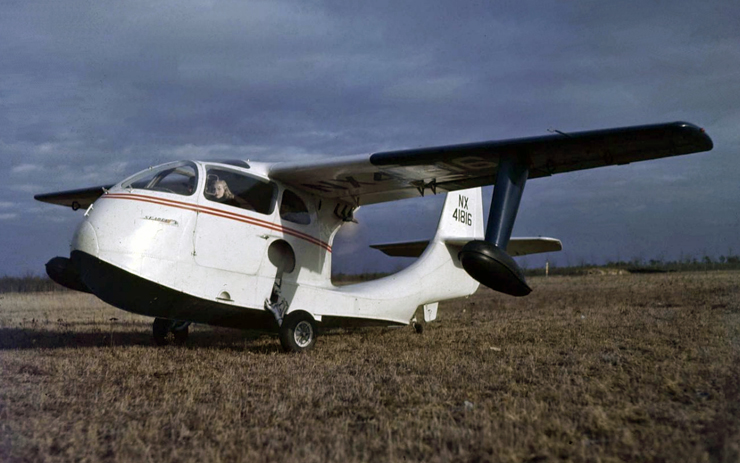
 To give to postwar fliers a plane that will embody the benefit of the engineering and design experience and skill that produced the P-47 Thunderbolt, Republic Aviation Corporation, of Farmingdale,
L.I., plans production of a land and water plane for civilian use. This plane, development of which has just been revealed by Republic, gives such promise of performance that both Army and Navy are reported interested in its possibilities for sea rescue work.
To give to postwar fliers a plane that will embody the benefit of the engineering and design experience and skill that produced the P-47 Thunderbolt, Republic Aviation Corporation, of Farmingdale,
L.I., plans production of a land and water plane for civilian use. This plane, development of which has just been revealed by Republic, gives such promise of performance that both Army and Navy are reported interested in its possibilities for sea rescue work.